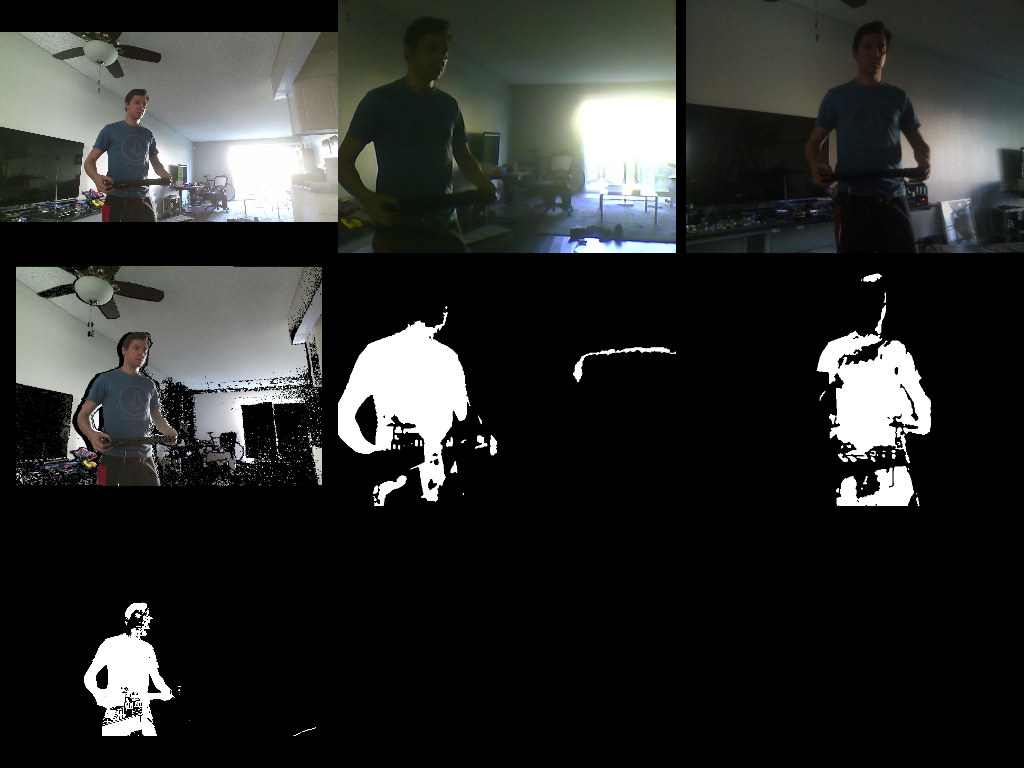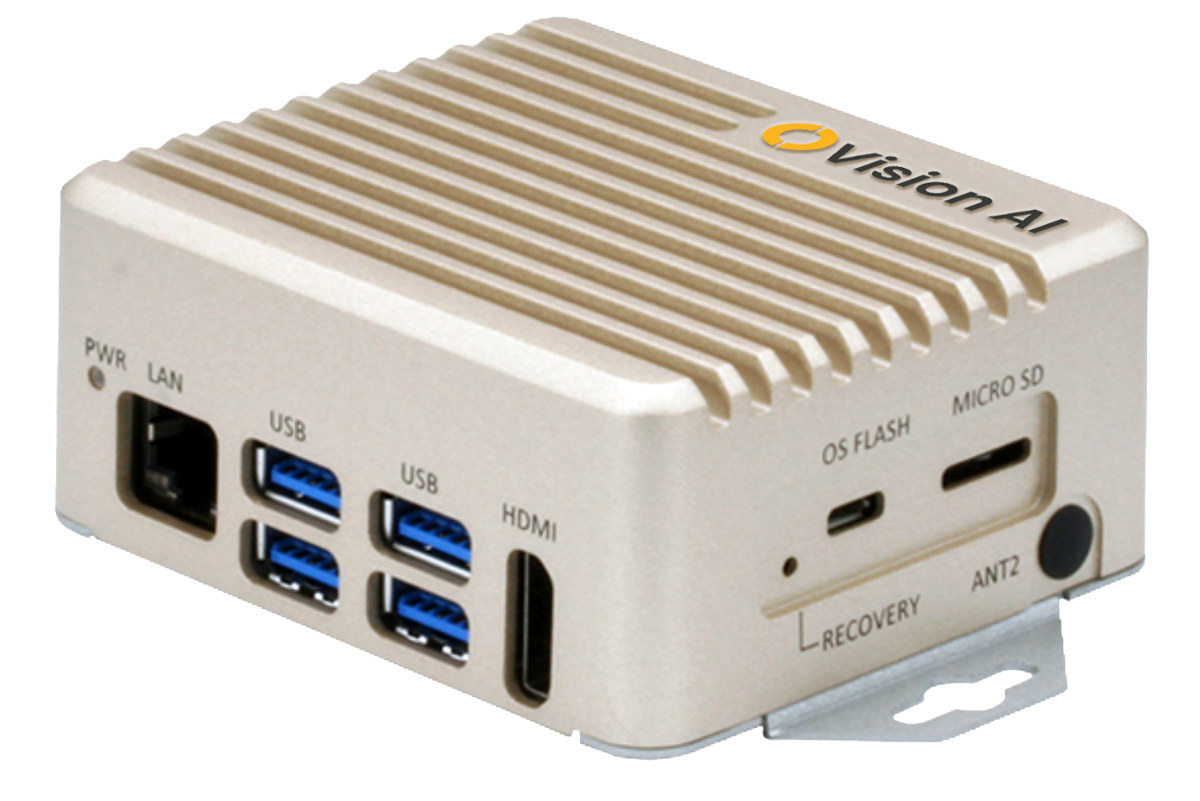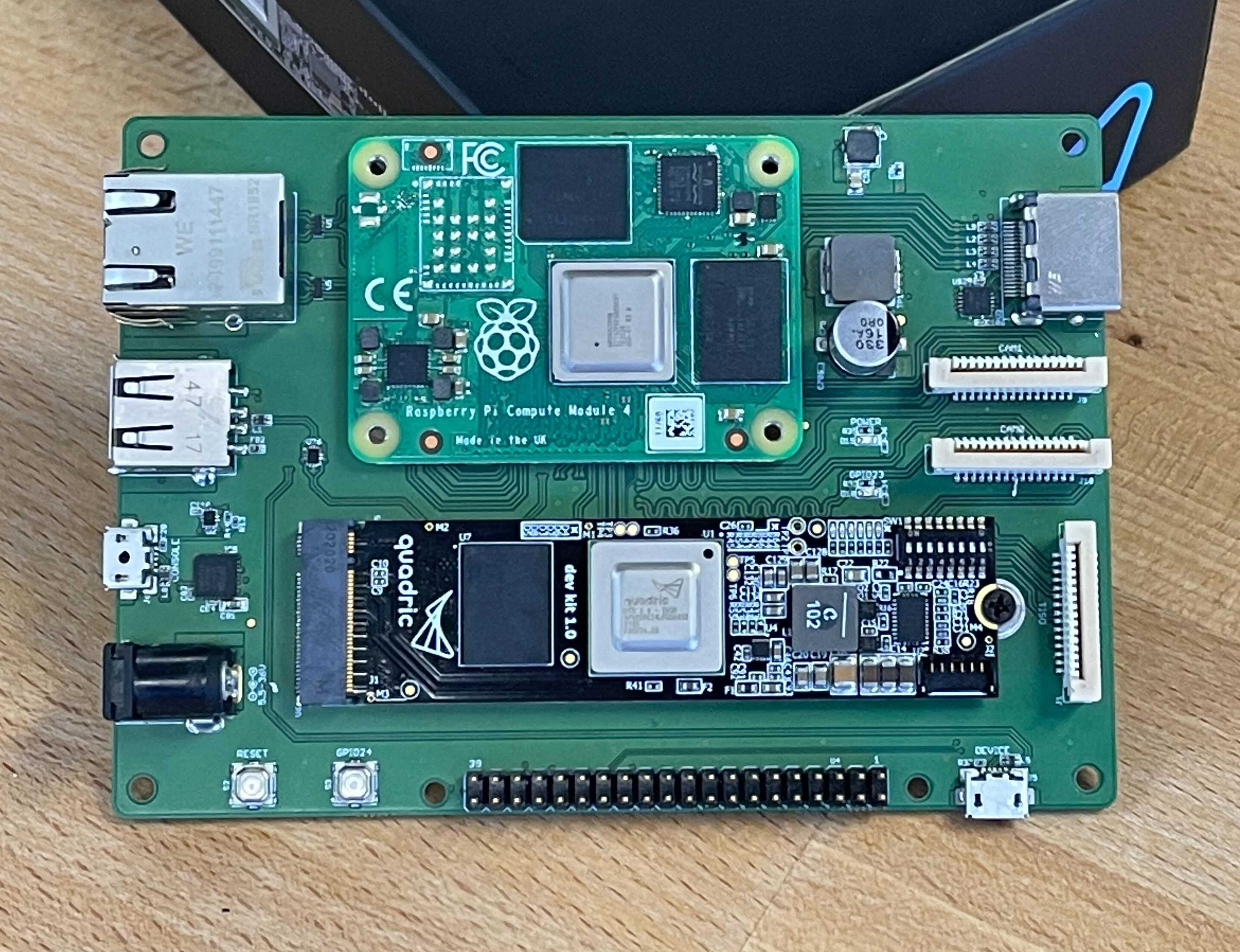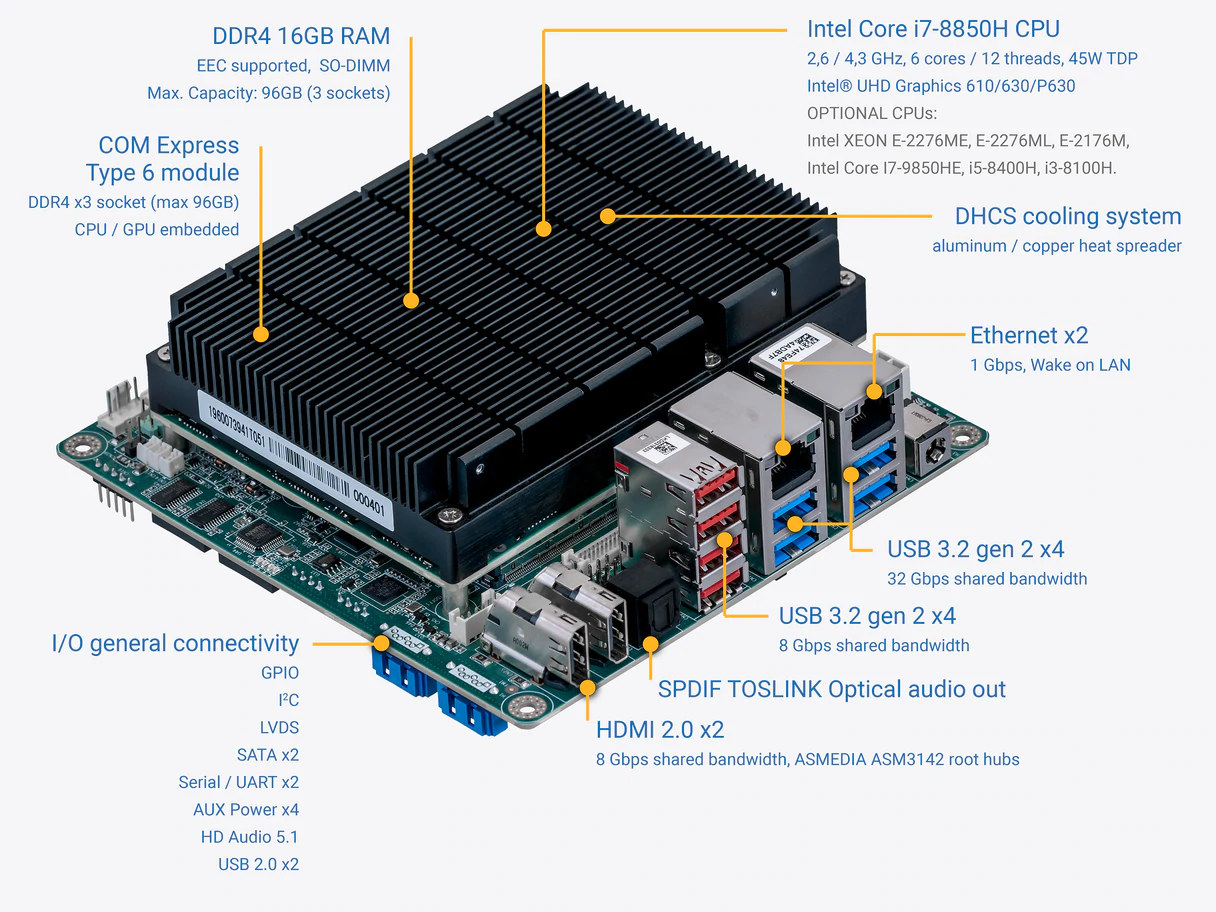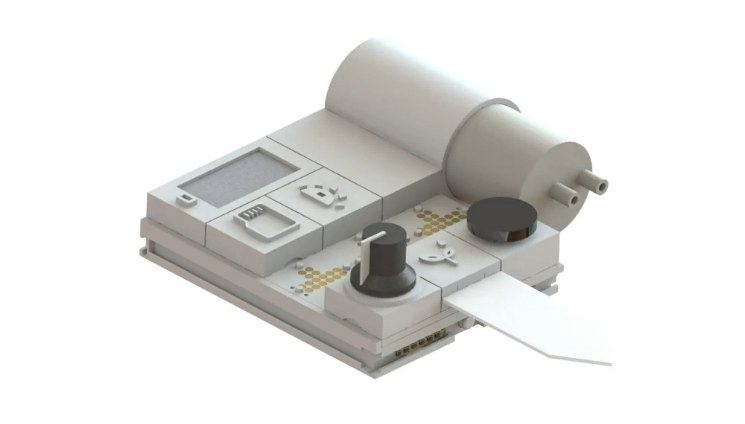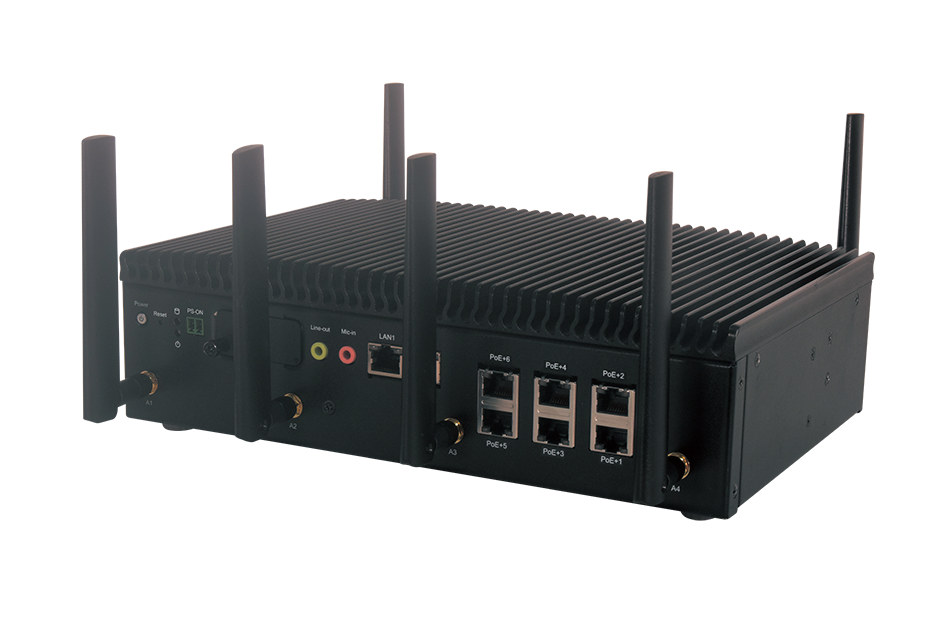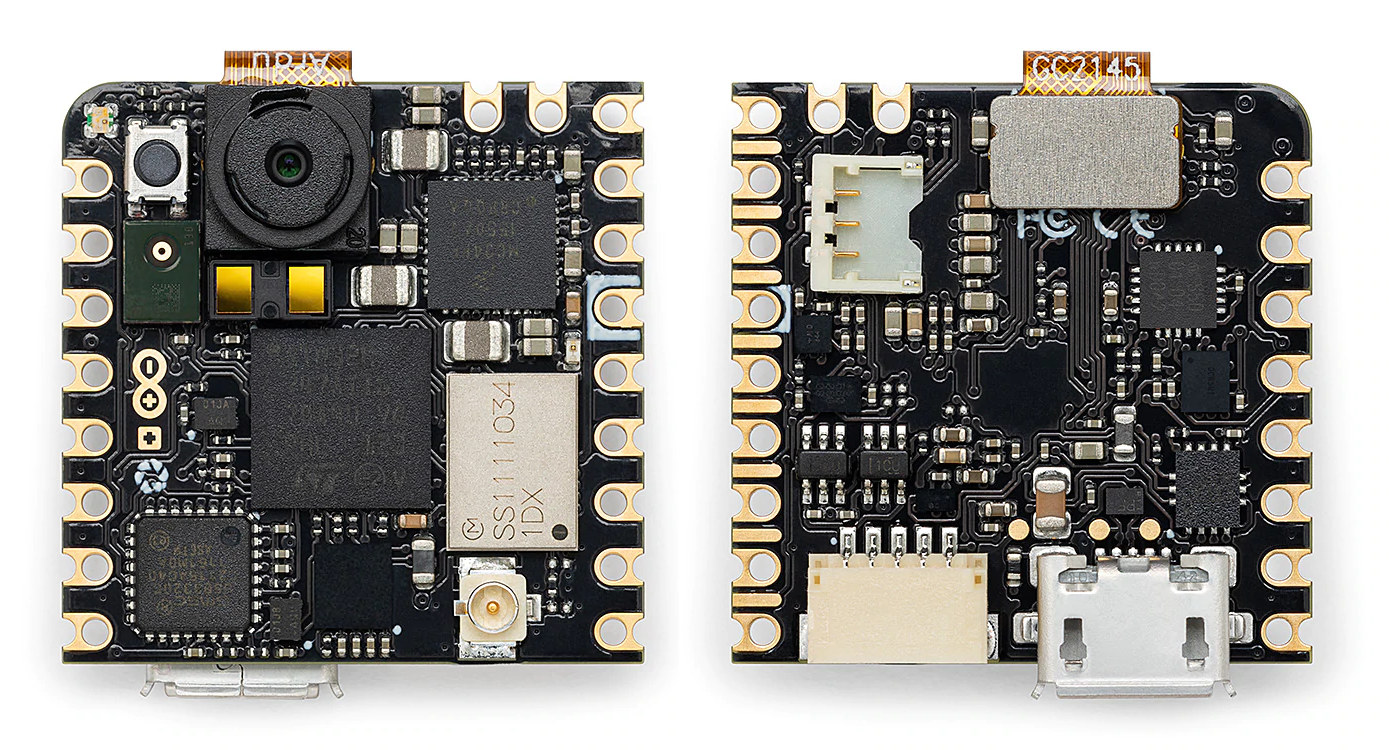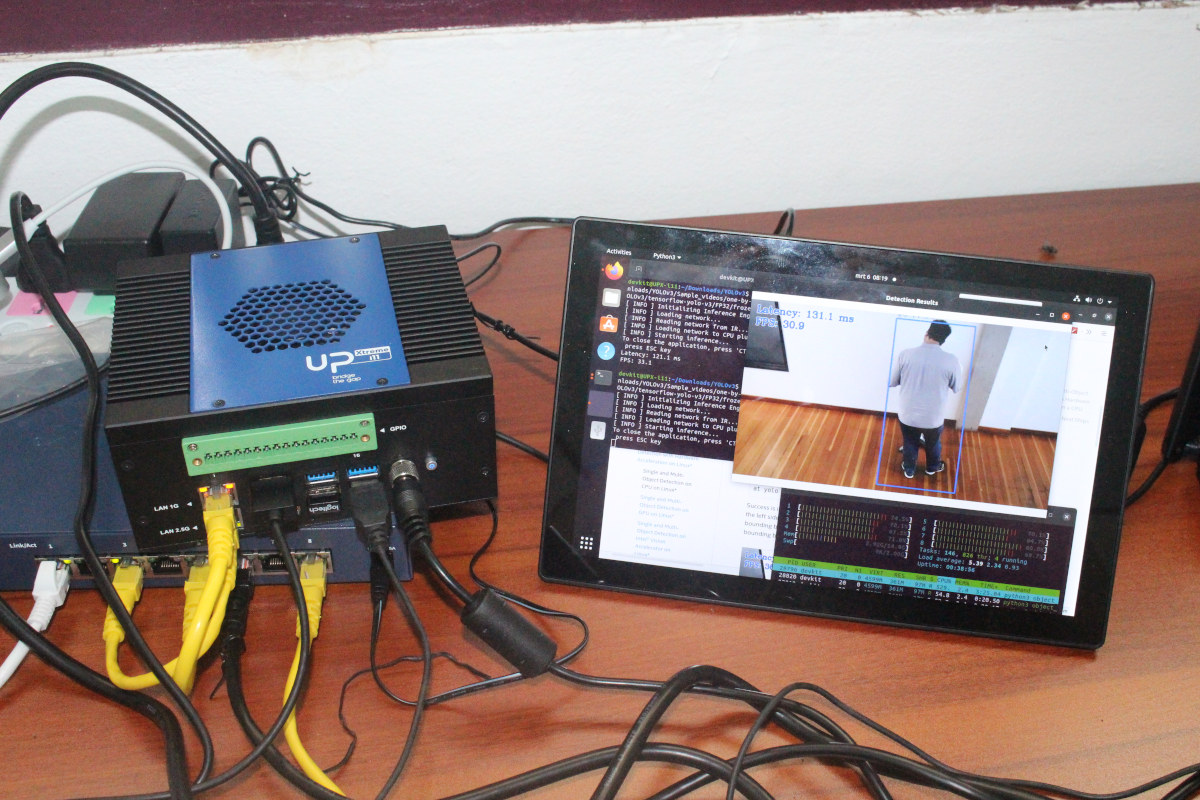OASIS is a Smart Home operating system based on ROS 2 that currently implements computer vision, input streaming, and general automation features, and can be integrated into Kodi media center. The operating system was recently released by Garrett Brown (a.k.a. garbear or eigendude), who is also known for being the RetroPlayer developer from Team Kodi/XBMC, and provides a complete implementation of the Firmata protocol for communicating with Arduino boards, plus additional support for temperature and humidity sensors, I2C, servos, sonar, SPI, stepper motors, and 4-wire CPU fans. Two main use cases are computer vision and input streaming at this time. The illustration above shows the former with the Kinect 2 driver ported to ROS 2, a background subtractor on all camera feeds using bgslibrary C++ background subtraction library, and Kodi as the visual interface. The second, input streaming, can be seen below with a Lego train (including a Falcon spaceship!) […]
Tiny Jetson Xavier NX mini PC gets AI-powered Oosto video analytics software
The Oosto Vision AI Appliance is a palm-sized “near-edge” device based on the NVIDIA Jetson Xavier NX system-on-module and running the company’s neural network models for video analytics that are optimized to support low-power devices, as opposed to servers with powerful GPUs. It’s not actually a new device, as the light gold color of the enclosure below looks like a model from AAEON, and indeed, it looks just like the AAEON BOXER-8251AI embedded box PC. That most probably means AAEON provides the hardware, and Oosto installs their video analytics software unto the device. It’s still interesting to look into the announcement, and Oosto has a TCO calculator that will put into context the cost involved in specialized B2B or B2G (business-to-government) solutions. Oosto video analytics software appears to focus on facial recognition for touchless access control and to help law enforcement apprehend suspects (from a watchlist) and help de-escalate […]
Quadric devkit features q16 hybrid AI, DSP, computer vision accelerator
The Quadric devkit is an M.2 Key M module equipped with the company’s q16 edge processor offering a hybrid data-flow + Von Neumann machine for not only neural networks, but also computer vision, digital signal processing, BLAS (Basic Linear Algebra Subprograms), and other workloads. This architecture allows the Quadric q16 to be more flexible than traditional AI accelerators and can deliver more effective solutions for heterogonous systems that may have multiple accelerators or require a powerful processor. The M.2 form factor enables easy integration into boards with an M.2 Key M socket such as the Gumstix Raspberry Pi 4 development board shown below with the Quadric devkit. Quadric devkit specifications: Accelerator – Quadric q16x4 Processor with 256 Vortex Cores, 8 MB on-chip memory, 4 kB per core memory, multi-precision multiply accumulate; 16 x 16mm package Memory – 4GB LPDDR4, 32-bit, dual-rank up to 3677 MHz Host Interface – 2-lane PCIe […]
BIVROST Lite5 mini-STX motherboard takes up to 96GB RAM for machine vision applications
BIVROST, a manufacturer of solutions in the field of image analysis and live video streaming, has just introduced the Lite5 mini-STX motherboard powered by an Intel Core Coffee Lake processor, and targeting machine vision, digital signage, security, video streaming, and other edge computing applications. The board is fitted with Advantech SOM-5899 COM Express Basic Type 6 module that supports up to 96GB DDR4 ECC memory, while the carrier board offers two Gigabit Ethernet ports, twelve USB interfaces, dual HDMI 2.0 video output, plus five M.2 expansion sockets. BIVROST Lite5 specifications: SoC Intel i7-8850H 6-core/12-thread processor @ up to 2.6 GHz / 4.3 GHz (Turbo) with 9MB cache, 24 EU Intel UHD 630 graphics; 45W TDP Intel i5-8400H 4-core/8-thread processor @ 2.5 GHz / 4.2 GHz (Turbo) with 8MB cache, 24 EU Intel UHD 630 graphics; 45W TDP Some Xeon processors are also available upon request System Memory – Up to […]
Pockit modular Linux computer gets a Raspberry Pi CM4 upgrade
We first wrote about the Pockit modular Linux computer with hot-plugging magnetic blocks about a year ago. The system was based on a STM32+ESP32 mainboard with a socket for an optional Raspberry Pi Compute Module 3 and included magnets and electrical contacts to snap and hot-plug modules/blocks while the computer is running. The developer (Anil Reddy) has made good progress with the project and added the option to use a Raspberry Pi CM4 with Pockit (provided you can find one) to improve performance, for example for computer vision. Other changes include support for AI accelerators, an improved dashboard, home automation integration, and more. Pockit now supports over 80 feature BLOCKS ranging from a rotary encoder to a microSD card reader to various camera types, an HDMI block, AI accelerators, and so on. All of which can be magnetically snapped while the computer is running, and automatically detected in the dashboard. […]
Lanner IIoT-I530 machine vision industrial PC comes with 6x PoE+ ports, dual 2.5GbE
Lanner IIoT-I530 is a fanless machine vision IPC (Industrial PC) powered by a choice of Intel Tiger Lake UP3 processors and equipped with six PoE+ or LAN ports for IP cameras, as well as two 2.5GbE ports. The embedded computer also comes with up to 64GB DDR4 RAM, two COM Ports, four USB 3.0 ports, dual HDMI output, digital inputs and outputs, as well as M.2 sockets for WiFi 6 or/and 5G connectivity, plus NVMe SSD storage. Lanner IIoT-I530 specifications: SoC – 11th Gen Intel Core Tiger Lake UP3 up to Core i7-1185GRE quad-core CPU @ 1.8 GHz / 4.4 GHz (Turbo) with Intel Iris Xe Graphics System Memory – Up to 64GB DDR4 3200 RAM via 2x 260-pin SO-DIMM sockets Storage 1x SATA with 2.5-inch drive bay for SSD/HHD 1x mSATA socket, 1x M.2 M-Key 2280 PCIe Gen4 x4 socket for NVMe SSD 256Mbit SPI Flash for AMI BIOS […]
Arduino Nicla Vision – A tiny STM32H7 board with 2MP camera, WiFi & Bluetooth LE, sensors
Arduino Nicla Vision is an ultra-compact (~2.3×2.3 cm) board powered by an STMicro STM32H7 dual-core Cortex-M7/M4 microcontroller, and equipped with a 2MP camera, a WiFi & Bluetooth LE module, and a few sensors. Those features make the board suitable for machine vision and edge computing applications such as asset tracking, image detection, object recognition, and predictive maintenance. For instance, image detection, facial recognition, automated optical inspection, vehicle plate reading, or gesture recognition can be added to projects, either using Nicla Vision as a standalone board or in combination with Portenta or MKR boards. Arduino Nicla Vision specifications: Microcontrollers – STMicro STM32H757AII6 dual-core MCU with Arm Cortex M7 @ 480MHz, Cortex-M4 @ 240MHz, 2 MB flash, 1MB RAM Storage – 16MB QSPI flash Connectivity – 2.4GHz WiFi 802.11b/g/n up to 65 Mbps and Bluetooth 5.1 BR/EDR/LE via Murata 1DX module Camera – 2MP GC2145 color camera. USB – Micro USB port […]
UP Xtreme i11 mini PC review with Ubuntu 20.04, Edge Insights for Vision
UP Xtreme i11 is both a single board computer and a mini PC powered by an Intel Tiger Lake processor and designed for industrial edge applications. I received the one sample of the mini PC called “UP Xtreme i11 Edge Compute Enabling Kit” last December based on an Intel Core i7-1185GRE processor, fitted with 16GB RAM, a 128GB SSD, and pre-loaded with Ubuntu 20.04 operating system. I’ve now had more time to play with the system, and I’ll report my experience with Ubuntu 20.04 and Edge Insights for Vision, a computer vision framework that’s part of the getting started guide. The latter was missing from my package possibly because customs opened the package, and forgot to put it back in. The most important part is “devkit” is used as username and password. Software for UP Xtreme i11 and Fan Control While Ubuntu 20.04 is pre-installed on the mini PC, it’s […]


